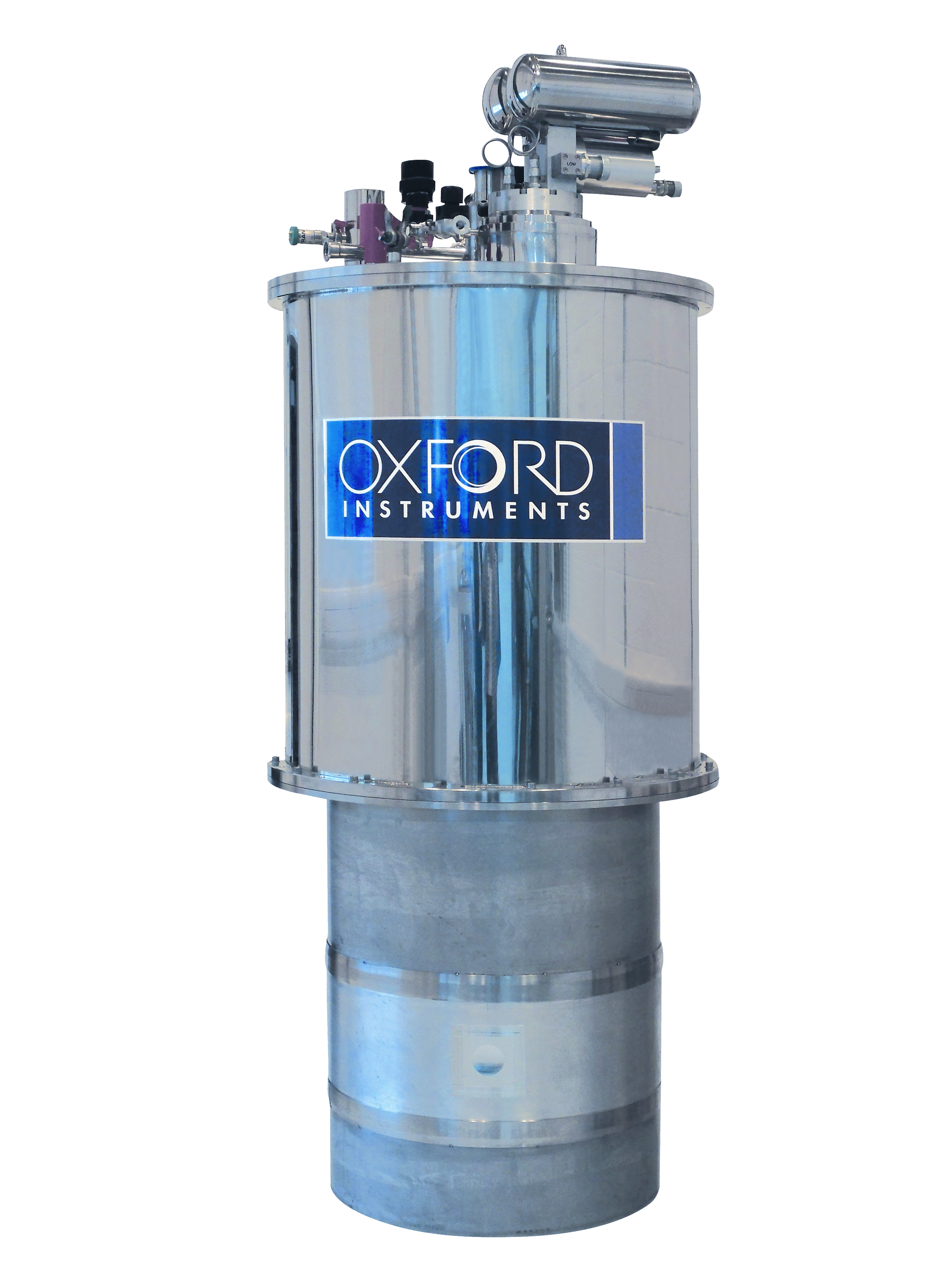製品

オックスフォード・インストゥルメンツは中性子散乱、X線散乱および光学分光法を含む多くのアプリケーションのためにスプリットペア マグネットシステムを他社に先駆けて開発しました。低温と磁場の方向、磁場の強さ(上限15 Tまで)を組み合わせ、独自の強力なプラットフォームとして提供しています。 冷媒式、無冷媒式、および再凝縮式のオプションが用意されています。
平行および横方向の磁場へアクセス可能
中性子散乱およびX線散乱の場合、ビームラインには液体ヘリウムがなく、試料へ直接アクセスが可能
ビームライン設備への簡単な取り付けが可能
仕様に合わせた設計
SpectromagPT用7T標準オプション
漏洩磁場の範囲を最小化することが可能なアクティブ磁場シールド
偏光ビームのゼロ磁場シフトを可能にする非対称操作
光学測定用に2つのオプションが用意されています。お客様の実験用途に適合するようカスタム設計も対応可能です。
磁場の強さ、均一性、マグネットの大きさのは密接に関連しており、当社のエンジニアがニーズに合った最適な組み合わせを見つけることができるよう、相談させて頂きます。
ご要望に関する当社担当者への お問合せ先はこちら
Typical high field magnet systems
Field strength: 15 T at 2.2 K, 13.5 T at 4.2 K
Field direction: Vertical
Homogeneity (over 10 mm DSV): 0.5 %
Split at magnet centre line: 20 mm
Split angle: ± 2 degree
Neutron access in the horizontal plane: 330 degree
Sample temperature range: 1.6 - 300 K
The Rutherford Appleton Laboratory purchased two recondensing neutron scattering magnets including a 9 T wide angle and 14 T at 4.2 K. These magnets are used on the LET, MERLIN and WISH target stations at ISIS.
Dr. Oleg Kirichek, Sample Environment Group Leader at ISIS, Rutherford Appleton Laboratory commented: “Having a recondensing system allows us to considerably reduce our helium cost and health and safety issues. It also provides a homogeneous temperature distribution, which is crucial for optimum magnet performance. With these magnets, we should be able to provide our users with high magnetic field sample environments for neutron scattering experiments in a number of research areas such as high temperature superconductors, quantum magnets, spintronic materials, spin frustrated systems, heavy fermions, nanomagnetic materials and the recently discovered iron-based high-temperature superconductors.”
The ILL (Institut Laue-Langevin, Grenoble) received a 10 T asymmetric split pair coil magnet for their three-axis spectrometers. Dr Eddy Lelièvre-Berna, Advanced Neutron Environment Team Leader at ILL commented: “With this new design, the superconducting coils are reliably maintained at low temperature within a liquid Helium bath while considerably reducing the boil-off. Compared with dry systems, the absence of room-temperature bore provides a much larger sample space. It also reduces the amount of material in the beam and avoids unwanted neutron absorption and neutrons scattered to the detectors. Together, we have really made a step forward. Among the many topics to be investigated with this magnet are multiferroic properties, quantum phase transitions and excitations in single-molecule magnets. Our satisfaction is such that we have decided to order another magnet for studying the magnetic substrates of our future hard disks.”